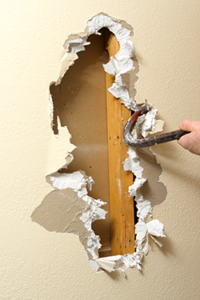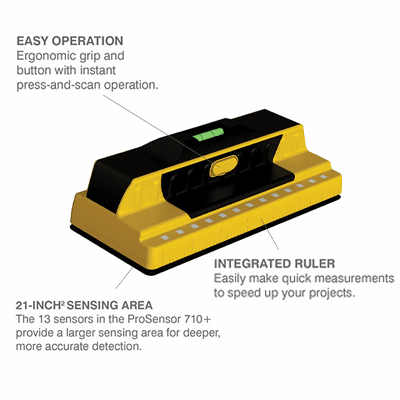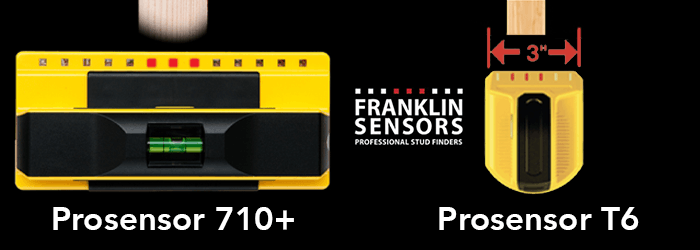Before you hang a flat screen TV, priceless piece of art, or heavy shelves on a wall, you must locate the stud behind the drywall. Therefore, a stud finder is a must-have tool in your toolbox. In fact, it’s one of the 12 must-have tools, according to Rosie.
Stud finders come in different shapes and sizes, varying in their functions. It’s important to know how to use them correctly, otherwise, you risk having that fancy flat screen TV fall off the wall.
What Are Studs?

While you may answer this question with the name of your significant other or celebrity, these are not the studs in question. A stud within your home is a 2×4 or 2×6 wooden beam that forms the frame for the wall. Drywall is placed over the frame, then mudded and painted to define the interior of the structure. This will not be the case for houses built with masonry. In those cases, the walls were made from concrete. Masonry houses use “furring” strips measuring one inch by one-and-half-inch and would most likely have been placed on top of the concrete blocks forming the wall. The drywall would then be hung using these strips. A stud finder will make the process of finding those strips easier.
What are stud finders, and how do they work?
The answer will vary depending on the type of stud finder being used. The most common and familiar are electronic stud finders. These work by measuring the density of the wall. As it passes over a stud, the sensor will blink because the density near the wall with the stud behind it differs from the wall backed by empty space.

Before the advent of personal electronics, it was common to use a “magnetic stud finder.” Because studs contain nails and screws throughout, homeowners and contractors would use a magnetic device to locate the screws and nails to identify the stud.
The most simple and easy-to-use stud finder is your hand. You can knock on the wall with your knuckles, moving along horizontally as you do so. Some areas in the wall will return with a hollow-sounding noise when knocked. Though, sometimes it will be more of a solid “thunk.” That “thunk” indicates the location of a stud. As most studs are separated by 16 to 24 inches, this can be verified by measuring that out and knocking at the selected distance. If your aim is true, then between those 16 and 24 inches should be another “thunk” as you knock.
If your hearing can not discern the differences between those knocks, locate a power outlet. The outlets are typically attached to the side of a stud. Knowing that studs run vertically, you can run that imaginary line up the wall to where you want to hang your item.
Okay, now you can insert all the “stud” jokes you want.
Franklin Sensors Stud Finder
Shop Stud Finders on the Rosie eStore Today!
Home Maintenance. To-Do | #StudFinders
###
PODCAST
Our Weekly To Do on stud finders. A must have tool in your toolbox. Plus what to do if you bought a home without a home inspection, leaf filter gutters, recourse for an unfinished bathroom remodel, woodpeckers, ‘screaming’ toilet, crumbling section of a block home, timber strand studs over traditional studs and fixing a home with copper and aluminum wiring.
Podcast Archive With Expanded Content and Resources
PHOTO CREDIT
- Shutterstock
RELATED CONTENT
- How Do I Locate A Stud In The Wall?
- What Should Be In Your First Home’s Toolbox?
- 5 DIY Projects For Your 3-Day Weekend
















